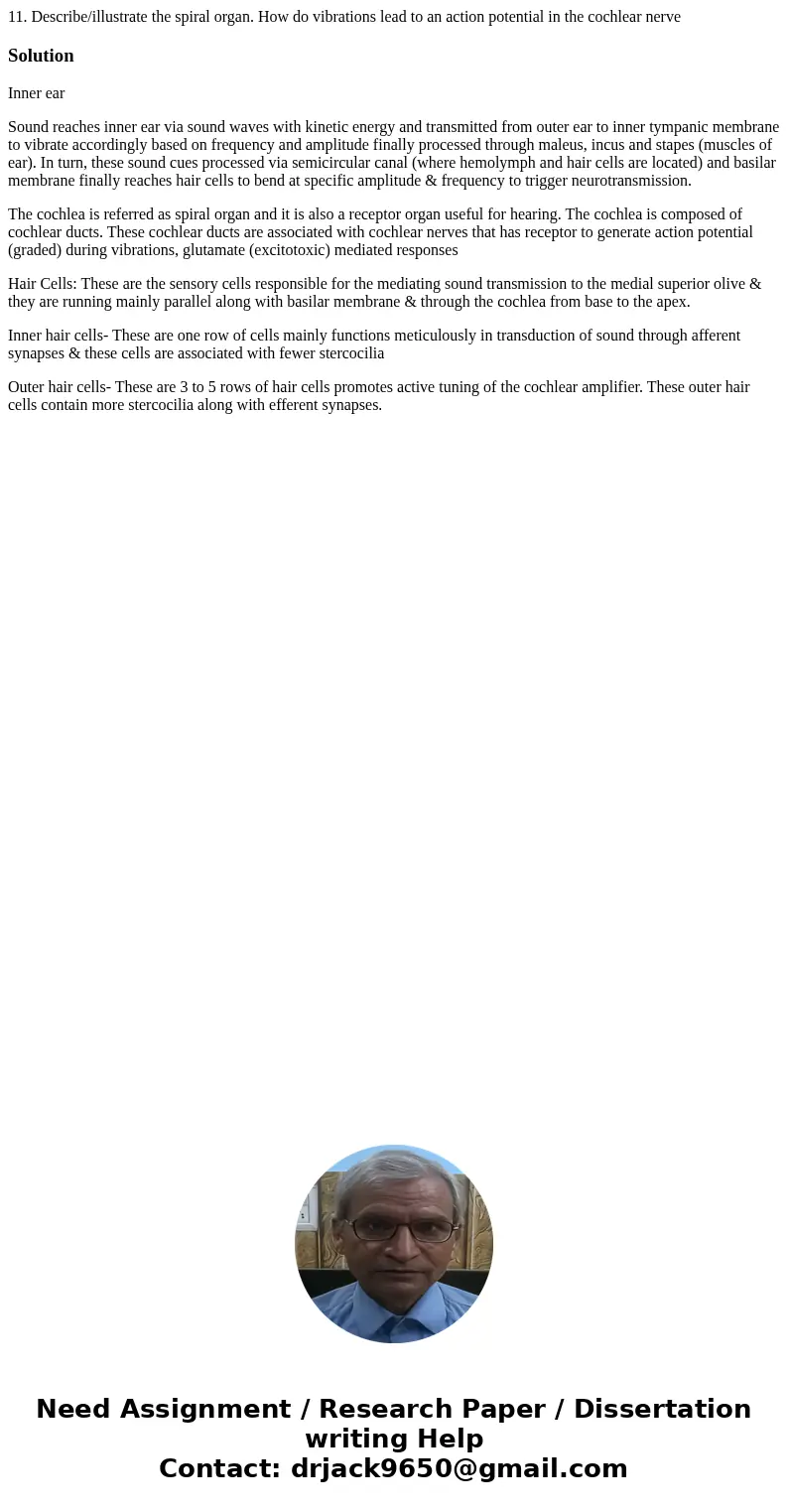11 Describeillustrate the spiral organ How do vibrations lea
11. Describe/illustrate the spiral organ. How do vibrations lead to an action potential in the cochlear nerve
Solution
Inner ear
Sound reaches inner ear via sound waves with kinetic energy and transmitted from outer ear to inner tympanic membrane to vibrate accordingly based on frequency and amplitude finally processed through maleus, incus and stapes (muscles of ear). In turn, these sound cues processed via semicircular canal (where hemolymph and hair cells are located) and basilar membrane finally reaches hair cells to bend at specific amplitude & frequency to trigger neurotransmission.
The cochlea is referred as spiral organ and it is also a receptor organ useful for hearing. The cochlea is composed of cochlear ducts. These cochlear ducts are associated with cochlear nerves that has receptor to generate action potential (graded) during vibrations, glutamate (excitotoxic) mediated responses
Hair Cells: These are the sensory cells responsible for the mediating sound transmission to the medial superior olive & they are running mainly parallel along with basilar membrane & through the cochlea from base to the apex.
Inner hair cells- These are one row of cells mainly functions meticulously in transduction of sound through afferent synapses & these cells are associated with fewer stercocilia
Outer hair cells- These are 3 to 5 rows of hair cells promotes active tuning of the cochlear amplifier. These outer hair cells contain more stercocilia along with efferent synapses.

 Homework Sourse
Homework Sourse